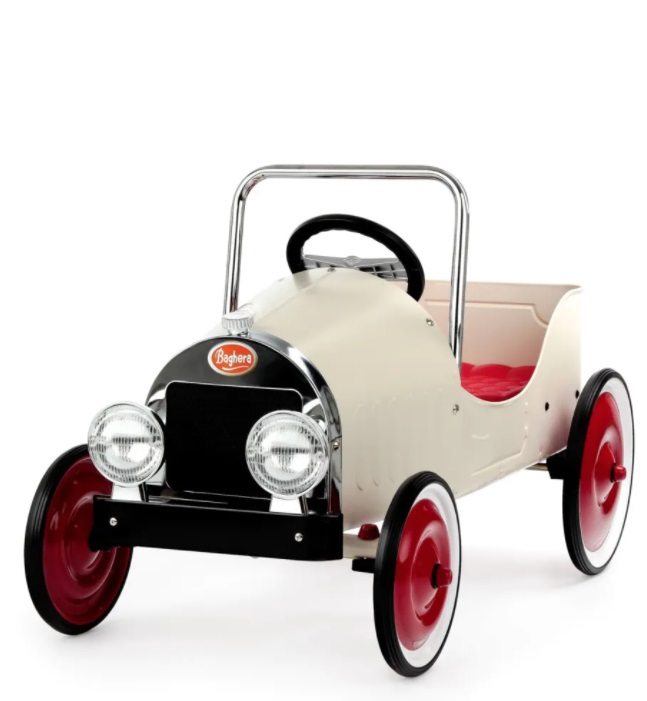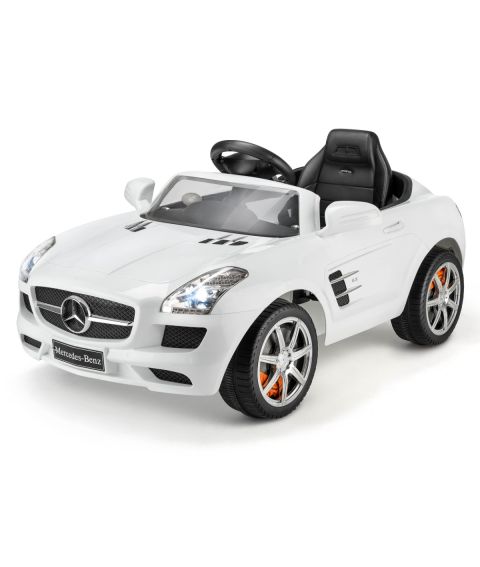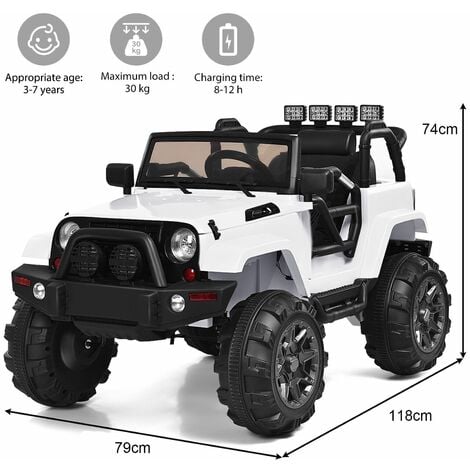Free Facts On Picking Electric Kids Cars
What Should You Look For Ride-On Vehicles That Are Suitable For Younger Toddlers And Older Children?To ensure the security, safety and enjoyment of your child's ride-on car, you should consider their height, age, and stage of development. Here are some factors to consider:
They are specifically designed for younger toddlers. These vehicles are usually low to the ground, have easy controls and simple features such as steering wheels, buttons or levers. Pick a ride-on car with a wide base for maximum stability and to decrease the possibility of tipping.
Children older than 3 years As they get older, children are able to handle ride-ons with more advanced features and controls. Consider cars with adjustable seats and weight capacities that are higher and more interactive features such as working lights, music and sounds. Think about ride-on cars that feature adjustable speeds or parental controls for different skill levels.
Size
Height and weight Height and Weight and weight into account when choosing a ride-on vehicle. Pick a car that has a seat that fits your child's height and weight. Beware of buying vehicles that are too big or small as they can cause discomfort or danger to travel in.
Comfort and Legroom Ensure that your child sits comfortably and has sufficient legroom on the ride-on. The size of the seating area should be suitable for the size and height of your child.
The Developmental Stage
Motor Skills - Consider your child's motor and coordination skills when deciding on a ride-on car. The controls for toddlers are simpler and they might not be able to manage the more complicated functions and controls.
Confidence and independence: Ride-on cars help children build confidence and independence while they learn to control and navigate their vehicle. Select a vehicle that gives your child the chance to develop their motor skills and also their confidence, through practicing the braking, acceleration and steering on their own.
Be aware of your child's interests and interest when choosing a ride on car. Select a car that has themes or colors that will appeal to your child's interests regardless of whether it's a vintage vehicle or sports car, a truck, or a themed character vehicle.
If you think about your child's age, size, and their development stage, then you can pick a car that is engaging and secure. Your child will be able to have hours of fun as they explore. Check out the most popular McLaren kids car for blog tips including electric toy car, childs car toy, toy with car, kids electric cars, car toy toy, toy the car, childrens electric cars, race car toy, car toy toy, remote control childrens electric cars and more. .

What Models For Kids Can Be Used Outdoors And Indoors?
Models of kids' cars include specific features for different usage scenarios and environments regardless of whether they're indoors or outdoors. Here are a few differences in these car designs Indoor Use Cars
Weight and size: Indoor cars are usually smaller and lighter to allow them to be tucked away in tight spaces like bedrooms, living spaces, and hallways. They are able to maneuver through narrow spaces and tight passageways easily.
Low Ground Clarity - Indoor vehicles have low clearances so that they don't get stuck, or snagged, on obstructions, like carpets, rugs, or thresholds. This allows the car to glide smoothly and without interruption over indoor surfaces, with no chance of getting stuck or falling over.
Smooth Wheels- Cars for indoor use' wheels are typically made from smooth materials, such as rubber or plastic to provide traction on surfaces with smooth surfaces, such as tile or laminate flooring. They are designed with the least amount of sound to reduce scratching and scratching on indoor surfaces.
Limited Speed - Vehicles in indoor environments are typically restricted to a slower speed to ensure safety and control. This helps prevent collisions caused by walls, furniture, or any other indoor obstructions.
Outdoor Use Cars -
Durable construction - Outdoor vehicles are built with tough materials, like steel or tough plastic, to withstand the rigors of handling and the elements of nature, such as temperatures, humidity, and sunlight changes. They are resistant to damage caused by outdoor elements.
Higher Ground Clearance - For outdoor use, cars have higher ground clearances to traverse bumps, uneven terrain or other obstacles that are encountered outside. This allows them to navigate rough terrains such as gravel, pavement, grass, or dirt without getting stuck or harmed.
Traction Tires - The tires of outdoor use cars are often fitted with patterns or treads in order to give better grip and traction on uneven or slippery surfaces. This gives you stability and control when driving in the outdoors, and prevents sliding or skidding.
Weather Resistance. Outdoor vehicles are typically equipped with weather-proof components such as sealed electronics, waterproof casings, and rust-resistant materials. This is in order to shield them from environmental damages. They are able to endure the elements of rain, mud, or puddles without compromising the performance.
Higher Speeds - Cars for outdoor use typically feature higher top speeds in order to accommodate wide spaces and the longer distances found outdoors. It is an exciting, adventurous experience for children who wish to experience the outdoors.
Be aware of these features and traits when choosing a vehicle to drive your child's car. It will be tailored to the environment and usage that you envision regardless of whether it's outdoor, indoors, or both. You will be able to ensure a long-lasting, fun and safe play experience. View the best click here about remote control childrens cars for more examples including childs electric ride on car, car on ride, toy car toy car, electric ride along car, toy cars toy car, toy with car, car for toy, kiddies cars, ride a toy, toy in car and more. .

How Can You Determine A Budget To Purchase A Ride-On Car For Your Child?
Setting a budget for your child's vehicle purchase requires you to consider a variety of aspects like features, durability, longevity as well as your financial position. Here's how to create a budget and get the most value for your money. Research Average Prices -
Research the average price for the model of kid's ride-on car you would like to purchase. Pricing information can be found for different models by visiting online stores, toy shops and the websites of manufacturers.
Choose Must-Have Feature to Have -
Determine which features are essential for your child's enjoyment as well as security. Ride-on cars that have features like realistic sound effects seats, seat belts, remote controls, and working headlights can cost more.
Prioritize the features according to your child's preferences as with your budget.
Consider Durability and Length of Life -
Pick ride-on cars built of sturdy materials such as high-quality metals or plastics. These can withstand frequent use and weather conditions.
To find out the endurance and longevity of different models, you can read reviews and ask other parents for their recommendations. An initial investment of more than a few hundred dollars in a top-quality ride-on vehicle could result in savings over the course of time because it will avoid repairs and replacements.
Compare prices from different retailers
Compare prices across different retailers and find the best deal. Online retailers, local toy shops, department and specialty stores might have affordable costs.
Be on the lookout for sales, discounts or clearance deals that can help you save money without cutting corners on quality.
Include additional costs in your budget -
Take into account any extra expenses, such as shipping costs, taxes, and accessories (e.g. spare batteries, security equipment).
Set aside the cost of your car, which includes any accessories or maintenance.
Budget realistically
Based on your research and financial situation, create a realistic budget that aligns with your goals and needs. It is important to consider features, durability and long-term use when setting your budget for a ride-on car.
Spend less on your child's toys or other items that aren't needed.
Think about Long-Term Value
Analyzing the value over time of your kid's automobiles in terms of its capacity to withstand the elements, its adaptability and capacity for your child to develop. In the long term, investing in the most feature-packed, top-quality vehicle might be more beneficial than cheaper alternatives.
You can score the best price on a ride-on vehicle for your child by setting a budget and making comparisons of features, durability and endurance, and setting an appropriate budget. It is important to prioritize features that are essential for your child's fun and safety, while still keeping within your budget. Take a look at the recommended Lamborghini ride on car kidscars.co.uk tips for blog examples including two seater electric cars, kiddies cars, toy a car, childrens electric ride on, kiddies cars, riding digger, childs ride on car, kidscars, toy and car, car electric ride on and more. .
